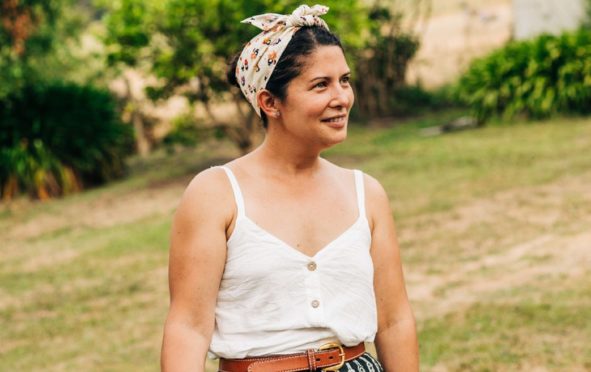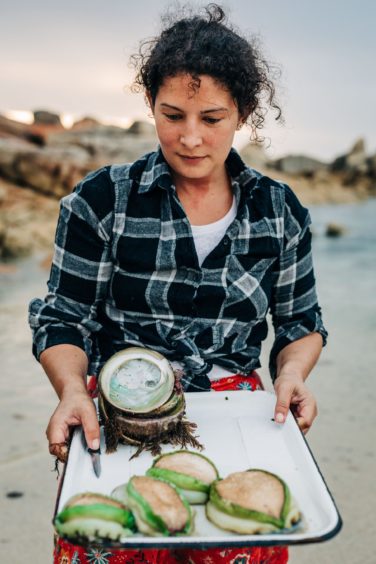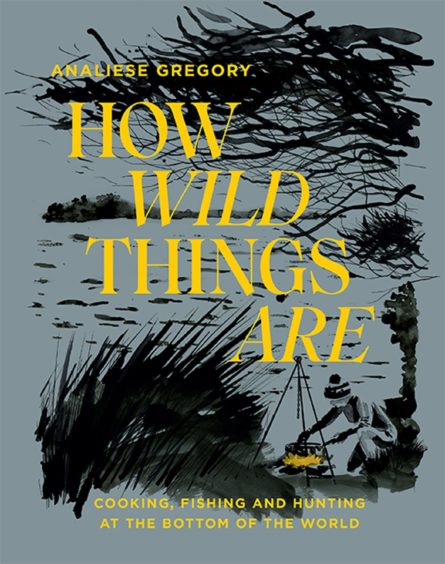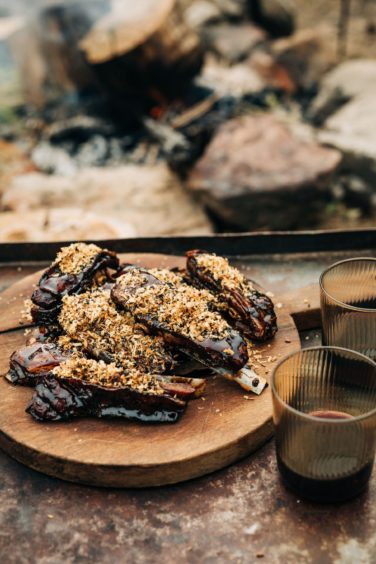
It’s 7pm in Tasmania, where chef Analiese Gregory is. There’s a huge bowl of in-season cherries beside her, a glass of wine in her hand, and a day behind her spent cooking, foraging and being awed by her new hive of bees.
“They like it when it’s sunny, and they’re not so into thunderstorms or rainy weather,” she explains. “I’ve discovered this, just so you’re aware, it makes them grumpy.”
Having worked in top restaurants in London, France, Spain, Australia, Morocco and more, Analiese landed in Tasmania four years ago – and her new book, How Wild Things Are, captures how she lives and eats.
It’s divided into two sections: recipes, the kind of food she’d throw together for a friend; and a sketch of her life on the Aussie island state, where she’s learned new skills, like cooking possum and wallaby. The latter, explains Analiese, is a sustainable meat in Tasmania and tastes a bit like veal crossed with venison.
Born in New Zealand, Analiese was raised on lots of Chinese food (her mother is Chinese-Dutch) and “grew up in one of those houses where we didn’t really go to McDonald’s or buy cakes at the supermarket”.
“If you made something, then you could eat as much of it as you wanted,” she remembers fondly.
Analiese tends two acres in the Huon Valley in southern “Tassie”, “on a dead-end dirt road in the middle of nowhere”. She has chickens for eggs, pigs destined for salami and charcuterie, those sometimes grumpy bees (“They’re a bit scary but they’re also beautiful”), and she’s building a vegetable garden. Her miniature goats – absolutely not for eating – weed and keep unruly blackberries under control. “They’re part of the family,” she says, firmly.
When she’s not tending her menagerie, Analiese can be found diving for sea food and harvesting seaweed. Prior to moving to Tasmania she’d only been diving a couple of times but the lure of ridiculously fresh, hand-plucked seafood, hauled in and cooked direct on the beach, coaxed her into the cold water.
“I just got really taken by it,” she says, holding her hands up with a grin. Now she stashes her dive gear in the car, so she can “jump in the ocean and see what’s here” at a moment’s notice. She said: “I’ve never seen a single piece of rubbish in the ocean in Tassie.
“I’ve come to realise that that’s almost abnormal in the world these days. It’s very calming. When I was working heaps of hours and was really stressed from the restaurants… it was the antithesis of that.”
Besides collecting abalone (scallops, she says, make for a reasonable ingredients swap), her dives are also spent on the lookout for seahorses and watching manta rays and gummy sharks scoot past while she attempts to catch crayfish “which I’m still struggling to get because they’re a little bit fast for me”.
Even if we weren’t in lockdown and starved of travel, Analiese’s life would likely make you want to pack a bag, buy a beekeeping veil and rescue a couple of goats. “A friend was making fun of me,” she says wryly. “He was like, ‘Oh, you have to go forage wild fruit and make shrubs. Your life is so hard!’ There are very good moments, where I go and dive and then cook abalone on the beach – life is great.
“Life is amazing but then I also live in a 1910 unrenovated house with no heating. And my goats escape and terrorise the neighbours. And one of my pigs keeps biting me and now I have to get a tetanus shot.”
She makes a good case for the downsides, but can’t mute the sense of adventure that emanates from her stories in her book. You can definitely see why Australian TV has been following her for a new series, A Girl’s Guide To Hunting, Fishing And Wild Cooking.
It’s like a more intrepid “Tasmania River Cottage” that sees her going floundering after dark and hunting for food.
“I would never just hunt for fun,” she says. “That’s not what it’s about for me. We’re not talking fox hunting. We’re talking: you hunt animals and then they get used.”
Waste is not an option. “A friend of mine just started tanning the pelts of the animals that we hunt,” she says with a certain amount of pride. “There was a deer we broke down and made salami and stuff with, and the next time I went over to his house, he had made a rug out of the skin. I was like, ‘Whoa, this is the next level’.
“I was sitting on the rug of the animal eating the salami made from it.”
Analiese needs to feel good about the meat she eats and where it comes from: “You can be an ethical meat eater. I had this crazy year, where the chickens had 40 babies and there were roosters everywhere.
“Now among my group of friends, there’s heaps of demand for it.”
Eating rooster may not be on the horizon for most of us, nor hand-dived abalone, but consider the book an opportunity for “armchair travel”, says Analiese, a chance to see “how ridiculously beautiful and varied Tasmania is”. That we will happily take right now.
Recipe: Confit lamb ribs with date syrup and toasted spices
Analiese says: “I came across some crisp-fried lamb ribs in Chinatown in Queens once, when I was eating my way through New York. The dish was served as a whole piece of fatty ribs and belly, crispy on the outside and smothered by a pile of toasted sesame and cumin seeds that I thought would be overpowering, but which actually cut through the meat perfectly.”
Serves 4
You’ll need
- 1.5kg lamb ribs
- 50g salt
- Olive oil, for cooking the ribs, plus 2tbsp for the breadcrumbs
- 15g fennel seeds
- 15g cumin seeds
- 120g panko breadcrumbs
- 100ml date syrup
Method
- Sprinkle the lamb ribs with the salt. Arrange on a tray and refrigerate for eight hours or overnight.
- Preheat the oven to 120°C (250°F).
- Wash the ribs, pat dry and put in an ovenproof pot, drenching them in olive oil. Bring the heat up slowly on the stove until the olive oil starts to bubble. Transfer to the oven and cook, covered, for two hours, or until the ribs are tender and the meat comes easily away from the bone. Take the ribs out of the oil and chill down in the fridge until firm.
- Combine the spices in a frying pan over a low heat and toast until fragrant, then pour into a bowl to cool down. Put the panko crumbs and two tablespoons oil in the pan and cook, stirring constantly, until crispy and golden. Add the crumbs to the spices, mix together and season with sea salt.
- Preheat a deep fryer or stovetop pot of oil to 180°C (350°F). You’ll need enough oil to cover the ribs. Take the ribs and cut down between the bones to make individual ribs. Deep-fry until brown and crispy on the outside, about five minutes. Drain and toss them in a bowl with the date syrup.
- To serve, arrange on a plate and cover with the spiced crumbs.
How Wild Things Are: Cooking, Fishing And Hunting At The Bottom Of The World by Analiese Gregory, photography by Adam Gibson, Hardie Grant, published on Thursday, £22

Enjoy the convenience of having The Sunday Post delivered as a digital ePaper straight to your smartphone, tablet or computer.
Subscribe for only £5.49 a month and enjoy all the benefits of the printed paper as a digital replica.
Subscribe © Adam Gibson/PA
© Adam Gibson/PA © Press Association Images
© Press Association Images © Press Association Images
© Press Association Images